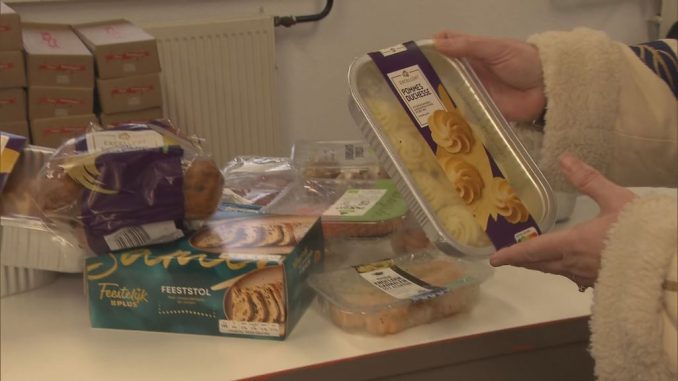
Stewed pears, roulade, pork tenderloin, and shrimp. It sounds luxurious, but these are the products that the food bank issues now that the holidays are over. Every year, supermarkets try to purchase in such a way that they have to throw away as little as possible, but nevertheless they do not sell their entire stock. Where does that food go?
Supermarkets’ Generosity
Many supermarkets donate leftover products to the local food bank. Albert Heijn says it does this with 4.2 million products per year. The food banks are happy with such generosity. In The Hague alone, hundreds of families can pick up luxury products, which sometimes only have a very short shelf life.
“We received a lot of oliebollen and Christmas stollen. They have a shelf life until January 1, but you can still eat them in the coming days,” says Bilal Sahin of the Haaglanden food bank. In addition to pumpkin and salad, a customer in the store in The Hague also picks up a bag of oliebollen. “I’ll take a few with me and freeze them. Then we can make a treat out of them in April.”
Efforts to Minimize Waste
Before products go to the food bank, large supermarkets first try to sell as many products as possible. They often offer significant discounts, with some supermarkets reducing prices by up to 70 percent after the holidays. Additionally, special packages with remaining luxury products are made available for sale.
The supermarket chain Plus gives stores the option to donate or sell leftover products at lower prices. Lidl, on the other hand, maintains its usual approach to handling leftover products throughout the year.
Impacts on Food Bank Supply
The reduction in food waste is good news, but it also means less supply for the food bank. They notice this in Rotterdam, among other places, where major suppliers have led to a reduction in ready-made meals and holiday-specific products. As a result, the food bank is experiencing a decrease in supply, particularly of fruit and vegetables.
Products that are not sold at the last moment or sent to the food bank end up as feed for animals such as pigs, cows, and chickens.

Be the first to comment